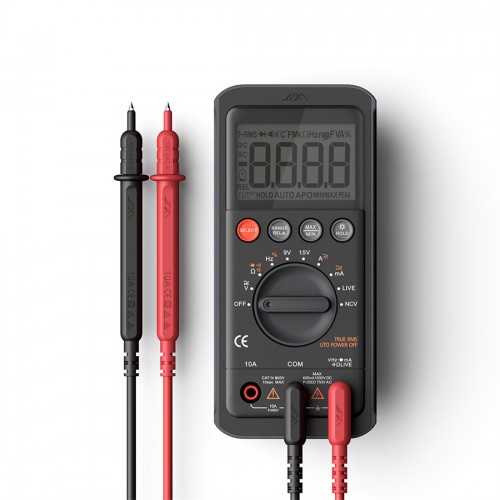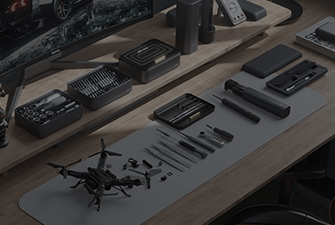
A well-stocked toolbox is a craftsman's essential resource for primary tasks like measuring planks and fastening screws accurately. This manual provides expertise to choose proper tools and employ them well.
- Start your setup by compiling vital hand tools—hammer, screwdrivers, wrenches, pliers, saws and measuring tapes.
- Gain understanding of each tool's functionality and its specific job uses.
- Refine techniques on real projects while progressively upping complexity.
Bear in mind that time spent learning hand tools enhances your skillset. With adequate know-how, tools will amplify your capacity to tackle demanding tasks with accuracy.
Supercharge Your Builds with Power Tools
Eager to upgrade work? Step into the dynamic world of power tools uniting precision and productivity. These must-have tools can change the game for professionals and casual builders alike. From durable drills to accurate saws, power tools provide a variety of functions for construction tasks.
- Use cordless impact drivers for efficient fastening and teardown tasks.
- Become proficient with reciprocating saws to perform fast clean cuts in wood, metal and more.
- Upgrade woodworking techniques with efficient planers and jointers for refined finishing.
Use power tools to streamline timelines and deliver remarkable project results.
Spot-On Measurements Simplified
When fine detail matters, selecting proper measuring instruments changes outcomes dramatically. From standard scales to refined calipers, measuring instruments assist in producing precise, reliable results. Whether practiced craftsman or novice DIYer, command of these tools broadens achievable projects.
- Uncover the broad assortment of measuring tools for different applications.
- Grasp the distinct uses and merits of each measurement instrument.
- Refine abilities in accurate measurement and proper implementation.
Complete Sets for All Tasks
For professionals and DIYers alike, the proper toolset is crucial to complete projects. Whether fastening screws or building furniture, the right set enhances precision, speed and safety. To pick an ideal toolset, assess the types of tasks you'll perform regularly.
Consider whether a broad tool collection or a concise specialized kit fits your needs? After defining needs, research brands and models to weigh features, build and cost. Remember to check customer reviews for real-world insights before deciding.
By investigating and planning, pick the perfect toolkit to handle jobs with certainty.
Maintaining Your Hand Tools for Peak Performance
Keeping hand tools well-maintained is necessary for any dedicated craftsman. Neglected tools often develop dull edges, faults and disappointing performance. Regular maintenance ensures your tools remain in top shape, providing you with years of reliable service. Begin with wiping and cleaning tools post-use to clear grime and particles. Keep your tools dry in storage to reduce rust and prolong life.
- Sharpen your blades regularly using a sharpening stone or file.
- Grease or oil moving components with recommended lubricants to prevent wear.
- Monitor handle condition and replace any cracked or compromised pieces.

Using straightforward upkeep measures preserves tools longer and boosts work effectiveness.
Core Hand Tools for DIY Workshops
A outfitted workshop makes a retreat for DIY lovers and weekend makers. Specialty instruments help, but a strong set of basic tools is essential for most projects. A must-have selection includes a reliable hammer, a versatile adjustable wrench, and a sturdy tape measure for accurate measurements. Include varied screwdriver sizes, pliers for gripping and a utility blade for cutting work. A capable saw handles precise cutting and a level preserves alignment and straightness.
- Key Hand Tools for DIY Workspaces

Your Guide to Safe Power Tool Use
Power tools are capable machines delivering impressive power and operational gains. But these tools insist on careful adherence to safety guidelines. Not following precautions can yield serious injury outcomes. This manual clarifies safety practices for power tools and equips you to operate safely.
Initiate by becoming acquainted with tools, read instructions thoroughly and learn safety elements. Always put on correct PPE such as safety goggles, ear protection and gloves. Maintain your tools regularly to ensure proper functioning.
Always remember safety is the foremost concern in workshops. Following these safety tips helps you operate power tools effectively and securely.
Picking Accurate Measuring Tools
For securing exact measurements, the instruments you choose matter greatly. A variety of measuring instruments are available, each designed for specific purposes. Awareness of tool features helps you make better selection decisions. Assess attributes such as accuracy, resolution and measurement range while selecting instruments.
- For length measuring tasks, a tape measure or ruler is generally used.
- For angles, a protractor is an indispensable tool.
- Calipers—especially digital—are perfect for measuring small features.
By carefully selecting the appropriate measuring tools, you can ensure accurate and reliable results.
Choosing The Ultimate Tool Set

Deciding on a tool set can feel both thrilling and a little daunting. As options multiply, feeling overwhelmed is understandable. This complete guide supplies the knowledge to determine the best set for requirements.
First and foremost, consider the type of projects you'll be undertaking. Are you a pro or a starter? Definitive goals assist in reducing options.
- Utilize both categories of tools to achieve efficient, successful project results Consider using a mix of power and hand tools to achieve productive, efficient results Combine hand and power tools strategically for successful and efficient project completion
- Highlight the must-have tools
- A solid hammer or suitable mallet or sledgehammer
- Screwdriver, wrench and plier assortments are indispensable versatile items
- Measuring tools including tape and ruler
- Tools for alignment: level, plumb bob, transit
Think about tool materials, spending constraints and company reputation. Know that buying lasting tools is advantageous in the long term.
DIY Made Simple: Using Tools Effectively
Launching a first DIY task might seem challenging. Still, armed with the right tools and knowledge, tough projects become manageable. Start by familiarizing getting to know learning about your tools. Read instructions thoroughly and test basic operations safely. Safety should remain your topmost concern at all times. Adopt safety equipment—goggles, gloves and ear defenders—to defend against hazards.
In tool choice, prioritize sturdy construction and reliable quality. Invest in reliable dependable trustworthy brands that will stand the test of time last for years serve you well.
Consult seasoned DIYers or knowledgeable staff at your local hardware or home improvement store. These experts offer valuable recommendations and insights to choose the best tools for your tasks.
- Always use sharp tools for safer, cleaner work.
- Store and arrange tools to prevent damage and keep them accessible.
- Attempt varied DIY tasks to expand competence and creativity
Deciding on Power or Hand Tools for Tasks
For a project, deciding between power and hand tools might feel like a tough dilemma. While powerful power tools maximize speed and output, classic hand tools are indispensable for precise and minor work. Refer to this guide to decide the appropriate tool option for your task.
- When work demands finesse—carving, assembling or delicate repairs—hand tools are preferred. Hand tools grant finer control and often present a more cost-effective choice.
- When projects require fast cutting, drilling or sanding, power tools markedly reduce time and effort. They dramatically reduce time and manual labor required.
Ultimately, choosing the preferred tool relies on the job details, your level and budget. Use both hand and power tools together when suitable for optimal, efficient results.
